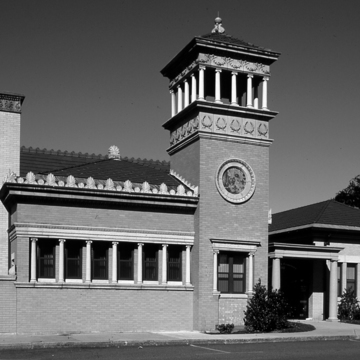The largest green space in Everett, Woodlawn Cemetery was laid out in 1850 as a rural cemetery modeled on Mount Auburn Cemetery (NC1) in Cambridge. The plan is typical with its curvilinear roads that conform to the natural topography. In 1897, William Hart Taylor designed the main office building, a yellow brick structure with red tile roof fronted by a corner tower with colonnaded belfry, to the left of the stone and terra-cotta gates, replacing the original lodge and gatehouse constructed in 1850. On axis with the entrance
The privately operated Woodlawn Cemetery borders the municipal burying ground of Glenwood Cemetery, established in the 1890s when Everett was incorporated as a city.















